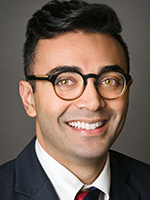 With thousands of newly minted physicians around the United States and internationally about to start their medical internships, teaching hospitals, residents, and attending physicians are gearing up for what has been known to be the rocky month of July. The “July Effect,” a phenomenon in which the mortality risk of patients and the number of medical errors increase—while efficiency falls—has been studied and verified.
With thousands of newly minted physicians around the United States and internationally about to start their medical internships, teaching hospitals, residents, and attending physicians are gearing up for what has been known to be the rocky month of July. The “July Effect,” a phenomenon in which the mortality risk of patients and the number of medical errors increase—while efficiency falls—has been studied and verified.
Having started my own orientation this week, I have gleaned from many conversations with fellow incoming interns the reality of medical education and why it needs tweaking. Most recent graduates complete their last sub-internship rotation (these are usually more clinically intense and emulate the actual residency experience as compared to elective rotations) over six months before starting their medical internship, and the norm is to spend much of the fourth year of medical school vacationing, relaxing, and inevitably forgetting a lot of medical knowledge. While this is certainly not a permanent effect—within a few days, it comes back for most—it begs the question of whether our educational trajectory in medicine needs rethinking.
One recent notable shift has been that many schools are moving towards front loaded clinical experiences. At Harvard Medical School, for instance, students begin clinical work from year one, and medical clerkship rotations at the start of their second year. When I asked a friend who is a current medical student what his class will do in their third year (which has traditionally been the clerkship year), he shrugged and said, “Who knows? I guess whatever we want!”
One question that comes to mind is whether medical school really needs to be four years in length? A handful of schools have begun shifting towards a three year curriculum, including the New York University School of Medicine, which is a founding member of the Consortium of Accelerated Medical Pathway Programs.
In my own experience at a school with the traditional 2+2 model (two years of pre-clinical work and two years of clerkships), I felt that the pre-clinical curriculum was too compartmentalized into a year of basic science followed by a year of clinical science. Moreover, it was far too drawn out over the following two clinical years, given that most students finish all requirements within a year and a half. Many of my classmates completed their fourth year of medical school by December or January, yet had to still pay a full year of tuition and had a clinical gap of several months before starting residency.
Very few programs have engaged in other interesting academic experiments. At the Mount Sinai School of Medicine, the Humanities and Medicine Program has been running successfully for several years. Through this program, students are not required to take the Medical College Admissions Test (MCAT), or many of the basic science requirements in college. While this has stirred a lot of debate, clinical outcomes have been similar across students at Sinai with regard to their clerkship performances and receipt of honors and awards. The main difference was that students in the humanities program had a higher frequency of selecting primary care specialties than their counterparts, which is in line with what our health system currently needs.
While the right balance in terms of basic science, clinical, and nonclinical education is probably different for each student in terms of their needs and preferences, the shift towards medical school being shorter seems to be more straightforward. Allowing students to graduate in three years, especially for primary care careers, would address two notable concerns: 1) physician shortages across the US are driving increased health inequalities by region, and 2) debt accrued during medical education can be a great burden on students, many of whom struggle financially through residency given that resident salaries are close to minimum wage when you calculate hours worked.
As I pull out old medical books trying to quickly relearn the criteria for common medical diagnoses or how to read an electrocardiogram, I can’t help but wonder why our medical education system has comfortably accepted this as the status quo for so long. We should be starting to care for patients when we are at our clinical best, not when we can barely remember the range of normal lab values. It’s not fair to us as former medical students or to our patients who may (perhaps rightfully) feel a little uneasy walking into a hospital over the next month.
Abraar Karan is an incoming internal medicine resident at the Brigham and Women’s Hospital and Harvard Medical School. He has worked to improve the health of marginalized communities in Africa, Latin America, and Asia. He is the editor of the book Protecting the Health of the Poor: Social Movements in the South. Twitter:@AbraarKaran.
Competing interests: None declared.
